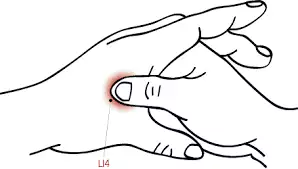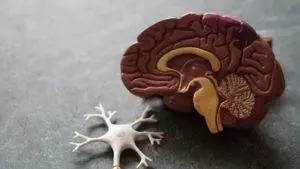-
 Art of Wellness Acupuncture & Traditional Chinese Medicine (TCM)11704 Wilshire Blvd, Suite 295, Los Angeles, CA, 90025
Art of Wellness Acupuncture & Traditional Chinese Medicine (TCM)11704 Wilshire Blvd, Suite 295, Los Angeles, CA, 90025
myartofwellness@gmail.com310-451-5522 Office Hours
MonClosedTue7:30 am --4 pmWed7:30 am --4 pmThu7:30 am -- 4 pmFri7:30 am -- 4 pmSat7:30 am -- 4 pmSunClosedOur office opens from Tuesdays to Saturdays 7:30 am to 4 pm, will be closed on Memorial day, Independent day, Labor day, Thanksgiving day, Christmas and New year.
-
Recent Posts
- How to Treat De Quervain’s Tenosynovitis With Acupuncture and TCM
- Chinese New Year 2026: Year of the Horse
- Acupuncture and TCM Treatment for Perimenopause Symptoms
- How to Treat Insulin Resistance With Acupuncture and TCM
- How to Treat Metabolic Syndrome With Acupuncture and TCM
- How to Treat Syncope With Acupuncture and TCM
- How to Treat Thoracic Outlet Syndrome With Acupuncture and TCM
- How to Treat Dupuytren’s Contracture With Acupuncture and TCM
- How to Treat Nutcracker Syndrome With Acupuncture and TCM
- How to Treat Rosacea With Acupuncture and TCM
- How to Treat Perioral Dermatitis With Acupuncture and TCM
- Lymphatic Drainage With Acupuncture and TCM
- How to Treat Turf Toe With Acupuncture
- How to Treat Nerve Pain With Acupuncture and TCM
- How to Treat Watery Eyes With Acupuncture and TCM
- How to Treat Ovarian Cysts With Acupuncture and TCM
- Sign up to receive news and updates and get my free report:“The Top 10 Reasons to Try Acupuncture”

December 2025 M T W T F S S 1 2 3 4 5 6 7 8 9 10 11 12 13 14 15 16 17 18 19 20 21 22 23 24 25 26 27 28 29 30 31
Headaches/Migraines
How to Treat Carpal Tunnel Syndrome With Acupuncture & TCM
By Qineng Tan, L.Ac., Ph.D. & Xiaomei Cai, L.Ac., Ph.D.
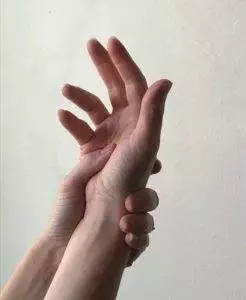
Tingling in fingers? Wrist Pain? Do you keep dropping things? It could be carpal tunnel hand pain and weakness caused by a repetitive stress injury. Carpal Tunnel Syndrome is a condition caused by an impingement of the median nerve, which travels through the wrist joint to give sensation to the hand and fingers. When this nerve is compressed, there may be pain or numbness in the fingers and hand. Carpal Tunnel Syndrome often gets worse as time goes on. It is important to seek out treatment for carpal tunnel to help reverse the progression of the problem.
Carpal tunnel is the most common form of peripheral neuropathy in the United States, affecting over eight million people per year. Almost a quarter of a million people undergo surgery to try to correct carpal tunnel syndrome annually. Carpal tunnel affects women more often than men, and unfortunately can cause disability, making it difficult or impossible for people to continue their work. Acupuncture treatment combined with Chinese herbal remedies has been shown to significantly reduce the tingling pain in fingers and weakness of the hands caused by carpal tunnel syndrome.
Do I have Carpal Tunnel Syndrome?
Carpal Tunnel Syndrome is a type of compression mononeuropathy, in which damage to a single nerve causes pain, numbness, and weakness of a particular part of the body: in this case, the wrist, hand, and fingers. Carpal Tunnel can also cause neck and shoulder pain and various types of headaches.
While pain and tingling in the fingers are the most common signs of carpal tunnel, it is also true that several other neurological conditions can cause pain and numbness in the hands. Compression of one of the nerves travelling through the cervical spine can also affect the hands. Impingement of the ulnar nerve, which travels down the arm and alongside the elbow (the “funny bone”), is known as cubital tunnel syndrome, and can also cause tingling in the fingers. The difference here is that usually carpal tunnel causes the sensations in the thumb, index and middle fingers, while cubital tunnel causes numbness or pain in the ring and pinky fingers. Thoracic outlet syndrome, which causes impingement of nerves between the collarbone and upper ribs, and Reynaud’s phenomenon, which causes restriction of blood flow through the blood vessels of the extremities, are rarer conditions which can also cause numbness in the fingers.
Top 5 Symptoms of Carpal Tunnel:
- Tingling and numbness in the hand and fingers, especially the thumb, index, and ring fingers. May feel like a burning sensation, or occasional short “shocks”
- Weakness of the hand, tendency to drop objects
- Wrist pain, hand pain, and pain in the forearm
- Fingers feel swollen, even if they don’t appear puffy
- Tingling that travels up the arm, neck and shoulder pain
Carpal tunnel syndrome symptoms usually begin subtly and develop gradually over time. Often people first notice some tingling or a sense that the fingers are swollen, especially at night. You might feel the urge to “shake out” your hands and wrists when you get up. As carpal tunnel becomes more serious, people will start to feel weakness in their hands as they go about their daily activities. In extreme cases, people with carpal tunnel may lose muscle mass in their thumb pad area, or cease to be able to sense hot or cold with their hands, which puts them at risk for burning themselves.
Carpal Tunnel Syndrome and Migraines
Recent research has suggested that there may be a link between carpal tunnel and migraine headaches. A study found that people with carpal tunnel were two times as likely to also suffer from migraines, and that people with migraines were twice as likely to also have symptoms of carpal tunnel. This information may help medical professionals learn more about migraine, which remains a mysterious condition, and has not been traditionally viewed as a problem with nerve compression.
While conventional medicine still has limited understanding of migraine, acupuncture is an effective modality for headache relief. A TCM practitioner can help headache, wrist pain, hand pain, neck and shoulder pain, all simultaneously, without any negative side effects.
Carpal Tunnel Causes and Treatment for Carpal Tunnel
Repetitive movements that cause inflammation in the wrist joint are the primary causes of carpal tunnel syndrome. This kind of repetitive stress injury occurs when you perform the same motions with the wrist and hand over and over, as when working with tools or assembly, chopping with a knife, playing an instrument, or typing on a keyboard. When you seek treatment for carpal tunnel, diagnostic testing will first be done to determine exactly what bones, nerves, muscles, or tendons might be causing symptoms of pain and tingling. Diabetes can also be a cause of mononeuropathies like carpal tunnel.
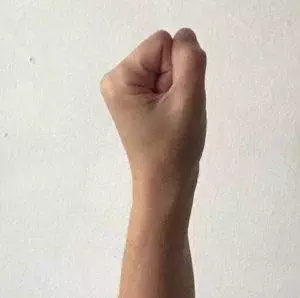
The first treatment for carpal tunnel usually involves some immobilization of the wrist (with a wrist splint or brace) and anti-inflammatory medications or injections. If the condition does not improve after reduction and modification of the repetitive motions that were causing carpal tunnel symptoms, then a specialist may recommend surgery. Electroscopic procedures may make small incisions in the tendon of the wrist to relieve pressure on the median nerve.
Early treatment of carpal tunnel is crucial for preventing further damage to the median nerve. Addressing symptoms of carpal tunnel syndrome as soon as possible with alternative modalities such as acupuncture and therapeutic tui na massage can help restore full function of the nerves and the mobility and strength of the hands and fingers.
How Acupuncture Helps Carpal Tunnel

Traditional Chinese Medicine uses a combination of therapies to address conditions like carpal tunnel syndrome. Acupuncture treatment works on the principle that pain and loss of mobility in the body is often due to blocked energy (Qi) along the meridians (energy pathways) of the body. Acupuncture treatment combined with herbal supplementation can reduce inflammation and help with the regeneration of nerve and other tissues.
According to TCM theory, carpal tunnel syndrome is usually attributed to “wind” or cold invading the muscles and ligaments, along with Qi and/or blood stasis causing blockages. One study showed that acupuncture treatment combined with a topical herbal treatment reduced pain in 90% and improved wrist function in 85% of the participants.
Another study in an American hospital, aimed at proving scientifically the unknown ways in which acupuncture works, used electrodes to show how treatment affected nerve impulses and produced changes in the somatosensory cortex. This study objectively quantified that acupuncture improved the conductivity of nerves in the wrist and effected changes in the brain deemed related to their carpal tunnel syndrome.
Top 5 Tips for Carpal Tunnel Relief
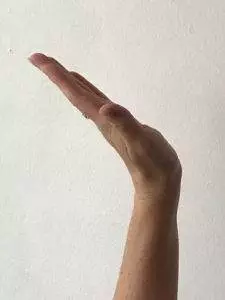
Here are some carpal tunnel exercises and acupressure points for carpal tunnel that you can practice to help prevent carpal tunnel and relieve carpal tunnel symptoms.
- Your doctor may recommend nerve gliding exercises, sometimes called nerve flossing or neural gliding. These gentle exercises are designed to help facilitate the smooth movement of the tendon through the carpal tunnel of the wrist bones, so as to alleviate pressure and inflammation of the median nerve.
- Using acupressure points for carpal tunnel can help relieve symptoms. Try applying firm pressure to PC6 Nei Guan, located on the inner arm, three finger-widths below the wrist.
- Be especially mindful when you are performing repetitive tasks with your hands. Take frequent breaks to stretch and rub your wrists.
- Pay attention to your sleep position. Avoid putting pressure on your wrists or holding them in a bent position during the night. Elevate your hands and wrists if possible.
- Keep your hands and wrists warm. Wear gloves whenever appropriate to the temperature in your environment. Keep a cup of hot tea nearby while you work, to warm your hands.
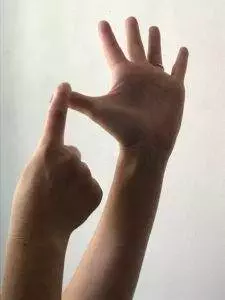
Acupuncture Near Me for Carpal Tunnel Syndrome
Carpal Tunnel tends to worsen over time as we age and continue to engage in repetitive movements through our daily activities. If you or someone you know is experiencing tingling in the fingers, hand pain, or wrist pain–or even having migraine headaches or neck and shoulder pain that may seem unrelated–it is important to address it promptly. Integrative care combining conventional medicine and acupuncture treatment for carpal tunnel can help to reduce hand pain, numbness in the fingers, and weakness in the wrist. Contact Art of Wellness to get started with the best acupuncture near me in the Los Angeles area for carpal tunnel syndrome and related migraine headache relief.
*This article is for education from the perspective of Traditional Chinese Medicine only. The education provided by this article is not approved by FDA to diagnose, prevent, treat and cure human diseases. It should not stop you from consulting with your physician for your medical conditions. Traditional Chinese Medicine is based on Qi, which is an invisible force that usually cannot be observed by modern science. Because science focuses on testing ideas about the natural world with evidence obtained through observation, these aspects of acupuncture can’t be studied by science. Therefore acupuncture and Chinese herbs are often not supported by double-blind, randomized trials, and they are considered alternative medicine therapies in the United States.
How to Treat Migraine with TCM and Acupuncture
By Xiaomei Cai L.Ac., Ph.D. & Qineng Tan, L.Ac., Ph.D.
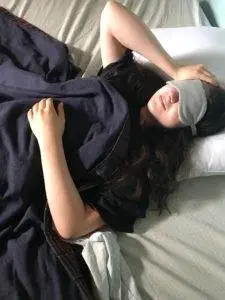
Migraine is a disorder that affects about 10% of people worldwide; women are three times more likely to suffer migraine headaches than men. A migraine is an intense headache that lasts anywhere from several hours to three days and is severe enough to impede normal activities. The throbbing, pulsating, or stabbing pain in the head typical of a migraine is usually accompanied by a variety of other symptoms, including nausea and increased sensitivity to sensory stimuli. Migraines develop in stages over several hours or days, and the exact nature of the experience differs widely from person to person.
Migraine is a recurrent condition, and patients are typically diagnosed with migraine if they have experienced at least five of these types of headaches in their lifetime. Some people suffer from chronic migraines that cause them to be debilitated several times per month.
There are different types of headaches, but migraine headaches are distinct from tension headaches, sinusitis headaches, and cluster headaches in key ways. Sinus headaches, for example, are related to a sinus infection.
Although much research has been done, the physiological processes that cause migraines are still not completely understood. There is no cure for migraines, and treatment methods focus on preventing migraines from beginning or fully developing, and alleviating the symptoms until the attack abates.
While more research is needed to demonstrate exactly how acupuncture impacts brain chemistry, studies have made it clear that TCM methods and acupuncture treatment are an effective alternative for relieving migraine.
What Causes Migraine?
Current medical theory generally attributes migraines to abnormal neurological functions in the brain cells. This may be due to genetics, as susceptibility to migraines does tend to run in families, especially from mothers to daughters. A cascade of chemical activity, possibly caused by fluctuations in hormones, causes the blood vessels to constrict, which leads to the pressure in head, throbbing pain and elevated nerve sensations. Migraines have also been linked to carpal tunnel syndrome, a nerve condition in which the median nerve is compressed. TMJ, or disorders of the jaw, can also contribute to migraines. Meniere’s disease, an inner ear problem that causes vertigo, dizziness, ringing in the ears, and nausea, has also been linked to migraines. Occipital neuralgia, which occurs when the occipital nerves are compressed or irritated, can cause migraine-like pain in the back of head and neck.
Stages and Symptoms of Migraine
Migraines do not simply cause a severe headache. Migraine episodes go through a pattern of stages, during which a variety of symptoms come and go. While a person may not be able to predict when a migraine will come on, once he or she is familiar with these stages, the course of the migraine attack is somewhat predictable.
- Premonitory or Prodrome Stage of Migraine – In the early part of the migraine, a person might experience physical signs such as stiffness in the neck (cervicogenic headache), especially on one side, frequent yawning, cravings for certain foods, marked thirstiness, and increased urination. Emotionally and mentally, a sense of fatigue, irritability, depression, or confusion might pervade. Some people feel hyperactive or even euphoric. This period can last for hours or days.
- Aura – Not everyone who has migraines experiences what is known as the Aura phase, which produces unusual sensory distortions. In other cases, people may experience the Aura phase, but not the subsequent headache pain phase. Some examples of migraine with aura symptomology include: Allodynia (hypersensitivity to touch, so much that it is painful), Metamorphopsia – a profound change in perception of the size of objects, including one’s own body, altered spatial awareness, Aphasia – impairment in the language center of the brain that causes forgetting words, feeling generally unable to express oneself verbally, Visual – seeing wavy lines or flashing lights (phosphenes), “blind spots” or reduced field of vision (scotoma), Auditory – loss of hearing, auditory hallucinations, Headache and dizziness or vertigo.
- Headache – Some people may have only mild pain during this phase, and therefore do not recognize they are having a migraine. Many migraine sufferers, however, experience severe throbbing headache, sharp pain in head, or stabbing pain (ice pick headache), often on one side of the head, headache back of head, headache behind eyes, or in the temples on head. The pain is usually worse if one is active. Heightened sensitivity to light, sounds, and smells are common, and people usually feel like retreating to a dark, quiet room to lie down. During this phase, people may also experience nausea and/or vomiting, dehydration, dizziness, hot flashes and/or chills, and strong emotions such as anxiety, fear, and depression. This phase can last anywhere from several hours to three days.
- Postdrome – The final phase of migraine is sometimes likened to a “hangover.” People generally feel low energy and low mood, as well as fatigue and compromised cognitive function. This phase, too, can last several hours to a few days.
Migraine episodes have a devastating impact on people’s ability to function normally. More than half of migraine sufferers miss at least two days of work per month, and many more try to get through their workdays even though they are in the middle of a migraine.
Are Migraines Related to Hormones?

While anyone can have migraines, women are three times more likely to experience them, especially during their reproductive years. Many women perceive their migraine to be a PMS headache or period headache, because it occurs prior to or during the menstrual period. These types of migraine can be particularly debilitating. The cause of headache is believed to be due to a sudden drop in estrogen. This same mechanism can cause frequent headaches during perimenopause or early menopause due to fluctuations in estrogen levels.
Sometimes women are prescribed the use of continual oral contraceptive medication (i.e., skipping the placebo week of pills) in order to prevent drops in estrogen that may be causing migraine. This treatment does not work for everyone, though, and obviously is not helpful for women who may wish to get pregnant.
Serotonin levels have also been linked to migraine. Research has shown that fluctuations in neurotransmitters and vascular functions in the brain are part of the migraine pathology, but it remains unclear exactly how this plays out. Triptans, drugs which act upon the serotonin receptors in the brain, are currently the most common treatment for acute migraine, as in some cases, they will stop a migraine attack from progressing. These medications do not work for everyone, though, and they cause constriction of blood vessels, which can lead to other problems, such as tightness, tingling, and hot flushes in various parts of the body.
Targeting the production and function of one of two specific hormones may produce some positive results, but as migraines appear to stem from a complex combination of hormonal, vascular, and metabolic malfunctions, a more holistic approach may be indicated. Acupuncture has been shown to help regulate hormones like estrogen and serotonin, specifically, but TCM achieves those results by observing and treating the whole person, emotionally, mentally, and physically; not only focusing on one or two isolated chemicals.
Acupuncture and TCM for Migraine Help
TCM theory is based on the concept of Qi as a life force energy which flows through the body along channels called meridians. Qi and blood move through these channels, several of which meet in the head. Blockages and stagnation in one organ system can impact other organ systems. Recurrent migraines are considered to be caused by stasis and deficiencies in the liver, spleen, and kidney, which cause yang energy from the liver to rise to the head. Overconsumption of the wrong kinds of foods can cause phlegm build-up in these organs, while alcohol and pungent foods can create excess heat energy. A typical TCM treatment protocol might involve using specific acupuncture points and herbs to quench liver fire and eliminate phlegm.
Acupuncture can work on migraine pain with its natural analgesic effects, while also helping to prevent future attacks by resolving these deeper organ system imbalances. One study showed that migraine patients given acupuncture treatment experienced fewer episodes and missed fewer days of work than those given medications. The results also indicated that acupuncture was more cost effective than the medications. A review of randomized trials involving thousands of patients concluded that acupuncture is effective at reducing the number of days lost to migraines and should be considered a valuable treatment option.
Top 5 Home Remedies for Migraine Headaches
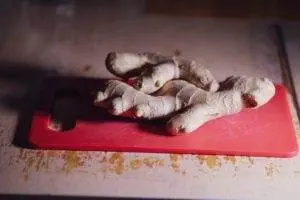
Migraines appear to be triggered by various stressors, lack of sleep, and certain foods. Aside from seeking acupuncture near me for migraine, there are several things you can do to prevent and relieve severe headaches. Natural remedies for migraines involve simple dietary, exercise and lifestyle modifications.
- Avoid foods that can trigger migraines. The most common ones are processed or prepared foods with added nitrates or MSG. Dairy products, especially very salty or aged cheeses, and chocolate should be avoided if you are susceptible to migraine, as well as extremely cold drinks and desserts. Dried foods like fruits and beans, and pickled foods can also be problematic.
- Emphasize foods high in magnesium, especially nuts, seeds, and high quality eggs.
- Ginger is known to relieve nausea and vomiting, and may alleviate other effects of migraine. One study showed that ginger was just as effective as Sumatriptan for decreasing symptoms of migraine. We recommend simply slicing fresh ginger root and steeping it in hot water to drink as a tea.
- Try essential oils like lavender or peppermint. Rubbing a little bit into the temples can be soothing.
- Find a gentle practice that combines breathing, movement, and meditation. Yoga, particularly restorative yoga, has been shown to be helpful for headaches. This may be because it helps people relax more fully. It also encourages better symmetry between the right and left sides of the body and brain.
Best Acupuncture in Los Angeles for Migraine Help
Drs. Cai and Tan at Art of Wellness in Santa Monica have over thirty years of experience treating migraine and other types of headache with TCM, acupuncture, and herbal remedies. Headache help is just a phone call away. If you or someone you know has been suffering with severe headache or chronic migraines, please do not wait another day to call 310-451-5522 and get started with an acupuncture treatment program that will allow you to reclaim your life and experience headache relief.
*This article is for education from the perspective of Traditional Chinese Medicine only. The education provided by this article is not approved by FDA to diagnose, prevent, treat and cure human diseases. It should not stop you from consulting with your physician for your medical conditions. Traditional Chinese Medicine is based on Qi, which is an invisible force that usually cannot be observed by modern science. Because science focuses on testing ideas about the natural world with evidence obtained through observation, these aspects of acupuncture can’t be studied by science. Therefore acupuncture and Chinese herbs are often not supported by double-blind, randomized trials, and they are considered alternative medicine therapies in the United States.
How to Treat Headaches with Acupuncture and TCM

by Qineng Tan L.Ac., Ph.D. and Xiaomei Cai L.Ac., Ph.D.
Headaches are extremely common. Virtually everyone gets a headache occasionally. But many people experience chronic and/or severe headaches that regularly disrupt their lives. With acupuncture and TCM, it is possible to get to the root cause of your headache without relying on pain medications that only mask the problem and can cause side effects.
The first U.S. survey study to examine the prevalence of different types of headaches showed that about 4% of the general population suffers from chronic headaches (defined as experiencing headaches about 180 days per year – or half the time). Half of those surveyed demonstrated characteristics of tension-type headaches, while roughly a third met the criteria for migraines.
In fact, headaches are one of the conditions most commonly seen in acupuncture clinics today. TCM doctors using acupuncture can offer relief headache without the side effects that prescription and over-the-counter drugs can cause.
Headaches that can be treated with acupuncture include migraines, tension headaches, headaches occurring around the menstrual cycle, sinus headaches and stress-related headaches.
In this article, we will analyze the various types of headaches and their causes, discuss how they can be treated with acupuncture and TCM, demonstrate scientific evidence of the efficacy of those treatments, and offer some great tips for how you can prevent and manage headache pain with lifestyle modifications.
Seven Types of Headaches

When treating with acupuncture, headaches are often classified by their location. This is only a broad guideline which needs to be further refined and integrated into the treatment for each individual, but this shows meridians and patterns that affect each area of the head.
- Top of Head: liver Meridian (Liver Blood Deficiency, Liver yang Rising)
- Sides of Head: Gall-Bladder Meridian (Liver-yang, Liver-Fire or Liver wind Rising)
- One Side Only: Gall-Bladder Meridian (Liver-Yang or Liver-Fire Rising)
- Temples: Gall-Bladder Meridian (Liver-Yang, Liver-Fire or Liver Wind Rising)
- Behind the Eyes: Liver Meridian (Liver Blood Deficiency, Liver Yang Rising)
- Forehead: Stomach Meridian (Stomach Deficiency or Stomach-Heat)
- Whole Head: Kidney-Essence Deficiency or External Wind
Many variables are taken into consideration in order to properly diagnose and successfully treat headaches. Each individual is treated differently depending on their unique symptoms.
Some of the factors that will determine what acupuncture points and other treatment techniques are used include: what triggers the headache; the location, frequency and intensity of the headaches; the quality of the pain; the time of day that they occur, what helps the headaches and what makes them worse.
What Causes a Headache?
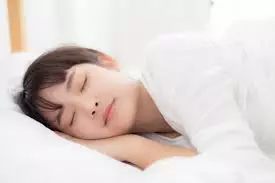
A patient’s answers to the questions above help the TCM practitioner decide whether the headache stems from internal factors–such as emotions, hormone imbalance, PMS, lack of sleep or nutrition–or from external factors–such as toxins in the environment, pinching in the neck due to pillow positioning, or TMJ tension in the jaw. Occipital headaches occur when the occipital nerves in the back of the head and neck are irritated. The presenting symptoms, quality and location of the pain, also help to clarify whether there is a deficiency (tiredness) or an excess (feelings of anger). Often, there is a combination of various contributing factors, and the practitioner tailors the treatment to address them in concert.
Acupuncture and TCM Herbs for Headaches
Once the practitioner has determined the root causes of the headache, she will choose a combination of points to stimulate with acupuncture treatment. Many migraine headaches are associated with the liver, for example, so points might be chosen to cool yang fire in the liver. Tension-type headaches may be related to tension in the neck and shoulders, so the acupuncturist will work to release blockages in those areas. Usually, patients are encouraged to get two treatments per week for eight weeks.
Systematic reviews published by Cochrane in which the results of several scientific trials were consolidated demonstrate that acupuncture is an effective treatment for prevention and relief of
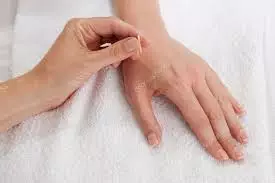
both tension-type headaches and migraines. They showed that patients receiving acupuncture treatment had on average about half as many headaches as those patients not receiving acupuncture. The results were also long-term, lasting for months beyond the cycle of treatment.
In addition to acupuncture treatment, the practitioner will likely recommend an herbal formulation that will address the patient’s specific needs. The daily use of the herb formula works to regulate the qi, balance yin and yang energies in the body, clear blockages and disperse stagnation. Studies have shown that consistent use of herbs over a period of several weeks can help significantly reduce headache pain.
Eight Self-Care Practices for Headache Prevention
Healthy habits can help prevent or reduce the frequency and severity of headaches. Focus on what you can do to “get ahead” of your headaches.
- Nutrition – Eat meals and snacks at regular times (every 3 hours or so) to maintain steady blood sugar levels. Avoid foods and drinks that are known to trigger headache attacks, including: processed meats, aged cheese, alcohol, and items sweetened with aspartame. Dehydration is a common cause of headaches; be sure to drink plenty of pure water throughout the day in addition to other liquids.
- Sleep – Establish and maintain a regular sleeping schedule – rising and retiring at about the same time each day – including weekends and vacations. Sleep needs vary from person to person; figure out how much is optimal for you, and then strive for that nightly.
- Stress – Stress is one of the most common headache and migraine triggers. Incorporate stress reduction techniques into your daily life. Set firm boundaries about taking on extra commitments, set aside time for meditation or other quiet activities that help you unwind and focus, such as knitting, reading, cooking – whatever brings you peace. Avoid screen time in the hour or two before bed, and establish a grounding morning routine that you practice before looking at email and rushing to get somewhere.
- Activity – Cardiovascular exercise stimulates the body to release endorphins, which are brain chemicals that improve mood and relieve stress. Walking or hiking in nature is a great choice. Gentle stretching exercises such as yoga can help you become aware of tensions and release them. Massage is also helpful.
- Acupressure points –For tension type headaches, try a pressure point called “Large Intestine 4.” This point is located between the thumb and forefinger. Apply firm pressure, squeezing deeply into the webbing there.

Acupressure point LI4 - Headache Diary – Keep a diary of when your headaches occur, along with any triggers, and share the information with your healthcare provider.
- See your healthcare provider – Make an appointment with your healthcare provider to specifically discuss your headache.
- Be a partner in your headache care – Be informed, be a participant in your treatment and be an advocate for your headache care.
Don’t let chronic headaches keep interfering with your life. Talk to your TCM provider, and get started on a treatment regimen that will help you live more days headache-free.
For more information, see our previous article about different types of headaches and triggers and this article about how acupuncture can treat migraines.
What is Multiple Sclerosis and How to Manage MS with TCM & Acupuncture
Multiples Sclerosis is autoimmune disease, Traditional Chinese Medicine & Acupuncture are very helpful to improve these condition.
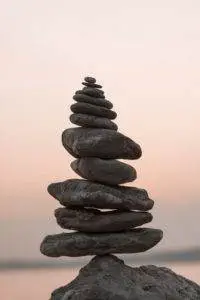
Dr.Tan’s Case and Testimony
Mr. M- a healthy 50-year old Caucasian gentleman—first visited my office Art of Wellness Acupuncture a few years ago. As an attorney, he had been working very hard to support his two daughters, who were both in college. About four months ago, the onset of serve lower back pain along with tingling in his left leg changed his life completely. He saw several doctors, had a number of x-rays and an MRI which revealed a moderate bulging disk on L4-L5. He tried different pain pills, NSAIDs, and underwent three months of physical therapy, none of which had helped. Recently, he had been experiencing numbness and weakness in his left leg, and was suffering from depression due to his inability to carry on with daily work and regular activities. When he talked to me, I noticed that he constantly rubbed his eyes. I asked if he felt any abnormalities in his vision. He answered yes, and that he had periodic occurrences of blurred vision. When I suggested that he showed me how he walks, I noticed his poor balance. He tended to fall on his left side because his left leg did not seem to follow his motion. Then I checked his knee and ankle reflex and found that they were excessively active. I was almost certain that the condition that made him suffer so much in the last few months was not a simple bulging disk or sciatica; it was a disorder of the central nervous system-Multiple Sclerosis. Immediately, referred him to a neurologist and suggested that he have a brain and cervical MRI. Two weeks later, he came back to my office with a confirmed diagnosis of Multiple Sclerosis.
Mr. M. is just one of 200 patients who are diagnosed with MS every week in the United States. There are about 400,000 people in the U.S. and 2.5 million patients who are suffering from this disease in the world.
Cause of MS
MS is an autoimmune disease in which infections or environmental changes can confuse the body’s defense system. Sometimes a foreign antigen mimics a group of the body’s own proteins. When the immune system response by mounting an attack against these foreign invaders, it inadvertently destroys the foreign antigen along with any similar antigens, including the body’s own tissues.
A recent study shows that a virus called adenovirus type 2 looks remarkably similar to the composition of the protective covering around the spinal cord and parts of the brain—the myelin sheath cells. The attacks of the immune system of this virus along with the mistaken attack on the myelin sheath is believed to be the ultimate cause of multiple sclerosis。
Common symptoms of MS
- numbness or tingling, usually in the leg or arm
- muscle weakness
- dizziness
- spasticity
- pain (moderate to severe)
- Ataxia
- Tremor
- Slurred speech
- Blurry, double vision or blindness
- bladder malfunction
- bowel dysfunction
- sexual dysfunction
- depression
- euphoria
- cognitive abnormalities
- fatigue
Most commonly, MS first manifests itself in a series of attacks followed by complete or partial remission as symptoms mysteriously lessen. These symptoms, however, will return later after a period of stability. This is called relapsing-remitting (RR) MS.
Treatment of MS
Unfortunately, there is no cure for MS yet. In Western Medicine, the treatment focuses mainly on decreasing the rate and severity of relapse. Beta interferons, anti-cancer drugs (to weaken the immune system), and steroids are commonly used for the treatment of MS. These medicines can reduce the number of MS lesions, delay the progression of the disease, and provide symptomatic relief for the patient.
In TCM, a condition called “Wei Syndrome” with symptoms similar to MS, was documented 2000 years ago in a classic Traditional Chinese Medicine book called Emperor Classic Medicine. Acupuncture and Traditional Chinese Medicine has been involved in the treatment ever since. MS patients who have tried acupuncture report improvement in pain, spasticity, numbness and tingling, fatigue, depression, anxiety, and bowl, bladder function.
Maintaining a healthy lifestyle is very important for the MS patient. This includes:
- Getting enough time to sleep and rest. Go to bed early
- Exercise regularly. Tai Chi and Yoga are very good to help patient relax, balance and with muscle strength
- Balanced diet, a lot of vegetables and enough protein from white meat
- Stress management
- Daily meditation and positive thinking
- Staying connected with friends and joining a support group
- How to reduce and prevent inflammation
Patient Story- Gilly
I was diagnosed with Relapsing Remitting MS in 1991 and I had no idea what a crazy, unpredictable journey I was about to embark on.
I woke up one morning, tried to get out of bed but my legs were like jello, I had no balance and had double vision.
I was given a spinal tap and MRI and lesions were detected on my brain & cervical spine.
When first diagnosed, my neurologist put me on one of the few FDA approved medicines for MS which don’t cure the disease, but delay the progression. For that I inject myself daily and have done so for 17 years
For the first 7 years after being diagnosed, I experienced relapses (flare up of symptoms) on average twice a year. The treatment for relapses was a 5 day course of steroids administered through IV, followed by 12 days of oral steroids.
The relapses affected my motor skills the most, especially walking but after a treatment of steroids, I was almost as good as new.
My friends suggested I try acupuncture. I was recommended to Dr Tan because he had studied MS in China. *
Dr Tan has been monumental in my life. He has given me treatments for a multitude of injuries I’ve suffered over the years due to frequent falls and is an expert in pain relief. He treats me for stress relief which contributes my general wellbeing. Dr Tan is very knowledgeable about Western medicine and MS treatments so I always ask his opinion.
I’ve been diagnosed with MS for 21 years and feel fortunate that Dr Tan has been treating me for a large part of that time. Although I partake in Western medicine, I know that Western medicine only treats the symptoms but Eastern medicine treats the cause of the symptoms.
My MS has progressed to the stage that I now use a wheelchair full time.
I go to acupuncture for preventative care. My immune system needs extra help especially during cold & flu season.
I am very aware that MS is a ‘designer’ disease, and no two people have the exact same symptoms. I would encourage anyone with MS to avoid stress, keep up a healthy immune system and try to stay positive and happy, because your emotional state affects your physical being.
Five Reasons to Get Acupuncture for Migraines

Migraine headaches are a bit of mystery to the medical world. This ailment tends to be poorly understood and frequently undiagnosed and under-treated. According to the Migraine Research Foundation, this neurological disease affects nearly 39 million Americans. Migraines are characterized by severe, throbbing pain usually found on only one side of the head. Migraine headaches can also be accompanied by visual disturbances, dizziness, nausea, vomiting and extreme sensitivity to light and sound. These types of headaches can last from four hours to several days. Because modern medicine doesn’t completely understand this neurological phenomenon, the typical treatment is somewhat hit or miss. continue reading
